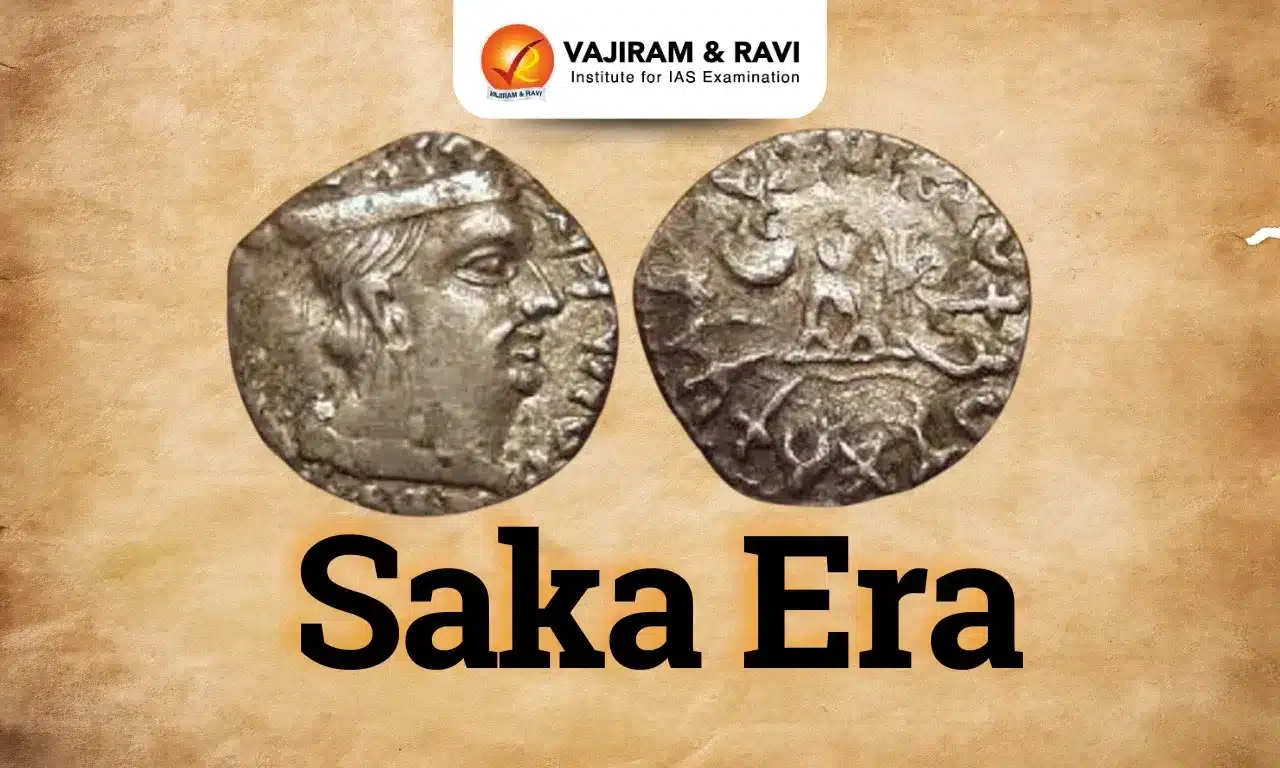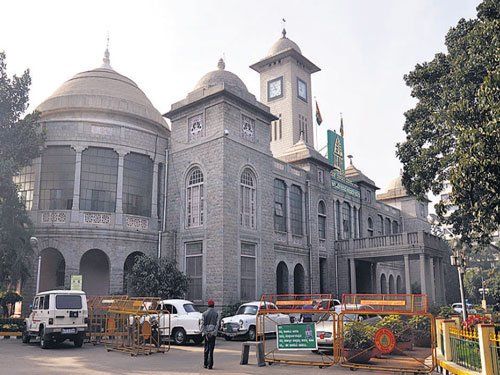The Scythians, originally from Central Asia, were called 'Saka or Shaka' in India. The Greeks were followed to India by the Sakas, who controlled a much larger territory than the Greeks. Remarkably, in his Mahabhasya, Patanjali calls the Sakas 'Anirvasita (pure) Shudras'. The Saka Era is a historical calendar system in India that started in 78 CE. It marks the rise of the Saka dynasty.
The Sakas were a group of Central Asian nomadic people who migrated to the Indian subcontinent during the early centuries CE. They established their rule in parts of India and played a significant role in shaping the region's history and culture.
What is Saka Era?
The Saka Era, or Shaka Era, is a historical calendar system in India that started in 78 CE. It marks the rise of the Saka dynasty, a Central Asian empire that governed parts of present-day India. This era remains a chronological reference in Indian history and is still used alongside the Gregorian calendar in some regions.
- The calendar helps determine the dates of various Hindu festivals and rituals.
- The calendar comprises twelve lunar months, each divided into two halves: the Shukla Paksha (waxing phase) and the Krishna Paksha (waning phase).
Saka Era Origin
The Sakas were of Iranian origin and were part of the wider Scythian nomadic group. They were driven out of eastern Iran by the Parthian ruler Mithradates (188-123 BCE), and they eventually settled in the region between the Indus Valley and Saurashtra.
- There were five branches of the Shakas, and they held power in various regions of Afghanistan and India.
- One Saka branch established itself in Afghanistan.
- Vonones and Spalirises were two of this branch's prominent rulers.
- The second branch established itself in Punjab,with Taxila as its capital.
- Maueswas a famous and important ruler.
- The third branch established itself in Mathura, where they ruled for about two centuries.
- Azilises belonged to this branch.
- The fourth branch was settled in western India, where the Shakas ruled until the fourth century.
- They produced a large number of silver coins. Rudradaman I, a Saka Kshatrapa of Western Indian ancestry, was a prominent ruler.
- The fifth branch of the Sakas established its dominance in the upper Deccan region.
- One Saka branch established itself in Afghanistan.
- Sources: The Yuga Purana records that in the first century BCE, the Scythians invaded Pataliputra. The lion capital of Mathura, associated with several Indo-Scythian kings from Maues to Rajuvula, mentions the consecration of a Buddha relic in a stupa.
Saka Era Important Rulers
The Saka Era is marked by notable rulers such as Rudradaman I and Nahapana, who played significant roles in shaping the era's history through their administrative and military achievements. Their reigns are crucial for understanding the influence of the Saka dynasty in ancient India. Following are some of the famous Saka rulers:
Saka Ruler Maues
Also known as Moga/Moa, he was one of the famous rulers and is considered the founder of the Saka rule in India in the first century B.C., who established rule in the Gandhara region of Afghanistan.
- An inscription discovered at Taxila mentions a Sakaking, Moga, and his kshetra/satrap (governor), Patika. His name was also featured on several copper and silver coins, which depicted typical Indian deities such as Abhisheka Laxmi.
- He led several failed expeditions against the Indo-Greeks. However, his successor, AzesI, finally destroyed the Indo-Greek kingdoms and extended Saka's rule to Mathura.
Saka Ruler Azes
Azes was the son of Maues. He succeeded in annexing the Indo-Greek king Hippostratos's domain in northern India. He is also thought to have been part of the 58 BC Vikram Samvat period, which is used to denote Azes' accession.
Saka Ruler Nahapana
Nahapana established the "Kshaharatas dynasty", one of the two renowned Shaka Kshatrapa empires in North and North-Western India. He controlled a vast area in western India around the Gulf of Khambhat. He has been mentioned in various inscriptions of Maharashtra and Satavahanas. He is said to have been defeated by Satavahana ruler Gautamiputra Satkarni.
Saka Ruler Rudradaman I
Rudradaman was the most famous Saka ruler. He was the grandson of Saka ruler Chastana and was a descendant of the Kshatrapa Dynasty of Western India. He assumed the title of Makakshatrapa after ascending the throne.
- Rudradaman ruled in the middle of the second century AD. His empire spanned almost the entirety of western India. He conquered the Satavahanas and reclaimed the majority of the areas lost to their rule during the Nahapana era.
- Junagadh rock inscription: This Sanskrit prose inscription was created by Rudradaman I around 150 CE. The inscription is known for its poetic meter and provides information about the political and economic history of the time.
- This inscription claims that he defeated the Satavahanas in battle. His name suggests that, at that point, the process of assimilation into Indian society was finished.
- The restoration of Sudarshana Lake in the Kathiawar region is his most well-known accomplishment. This lake had been used for irrigation since the time of the Mauryan Empire.
- After Rudradaman’s rule, the Sakas of this region continued to rule despite sporadic upheavals until the end of the fourth century A.D.
Saka Era Contributions
Despite their relatively short-lived rule in India, the Sakas left a lasting impact on the region's history, culture, and art. Their interactions with Indian civilisation resulted in a cultural exchange that enriched both sides.
- Administration: The Sakas and Parthians established the Satrap system of government, which was similar to the Achaemenid and Seleucid systems of Iran. The kingdom was divided into provinces under this system, each with its military governor known as a Mahakshatrapa.
- Coinage: The Saka coinage was of great quality and highly realistic. However, conventional coinage was continued.
- Coins of the Western Satraps have the Buddhist stupa, or chaitya, on one side and the head of the king on the other.
- Prakrit language was used in many scripts.
- Cultural Exchange: The Sakas were assimilated into Hindu society in India. They began to adopt Hindu names and religious beliefs to the point where their coins featured Hindu gods on one side. They also patronised Buddhism.
- Military: The Sakas were skilled warriors. Their experience with horse archery and cavalry warfare left a lasting mark on Indian military practices. The Sakas and Kushans popularised the use of tunics, turbans, trousers, and long, heavy coats.
- Language and Literature: The Sakas were patrons of the arts and culture. They promoted the use of local Indian languages for administrative purposes.
- For example, The Saka ruler Rudradaman I was a patron of Sanskrit literature and cultural arts. During his reign, the Greek writer Yavaneshwara translated the Yavanajataka from Greek to Sanskrit.
Saka Era Decline
The Saka Empire in India gradually declined due to various factors, including invasions by the Kushans and defeat by the Satavahana rulers. By the 4th century CE, their power had waned significantly, and their territories were absorbed into other Indian kingdoms. The last Saka king of the western satrap region, Rudrasimha III, was subjugated by Chandragupta II of the Gupta Empire, reducing the Sakas to a small local monarchy.
Last updated on December, 2025
→ Check out the latest UPSC Syllabus 2026 here.
→ Join Vajiram & Ravi’s Interview Guidance Programme for expert help to crack your final UPSC stage.
→ UPSC Mains Result 2025 is now out.
→ UPSC Notification 2026 is scheduled to be released on January 14, 2026.
→ UPSC Calendar 2026 is released on 15th May, 2025.
→ The UPSC Vacancy 2025 were released 1129, out of which 979 were for UPSC CSE and remaining 150 are for UPSC IFoS.
→ UPSC Prelims 2026 will be conducted on 24th May, 2026 & UPSC Mains 2026 will be conducted on 21st August 2026.
→ The UPSC Selection Process is of 3 stages-Prelims, Mains and Interview.
→ UPSC Result 2024 is released with latest UPSC Marksheet 2024. Check Now!
→ UPSC Prelims Result 2025 is out now for the CSE held on 25 May 2025.
→ UPSC Toppers List 2024 is released now. Shakti Dubey is UPSC AIR 1 2024 Topper.
→ UPSC Prelims Question Paper 2025 and Unofficial Prelims Answer Key 2025 are available now.
→ UPSC Mains Question Paper 2025 is out for Essay, GS 1, 2, 3 & GS 4.
→ UPSC Mains Indian Language Question Paper 2025 is now out.
→ UPSC Mains Optional Question Paper 2025 is now out.
→ Also check Best IAS Coaching in Delhi
Saka Era FAQs
Q1. What is the Saka Era?+
Q2. Who started the Saka Era in 78?+
Q3. Who were the Sakas in India?+
Q4. Who was the famous ruler of Sakas?+
Q5. Who destroyed Sakas?+

















